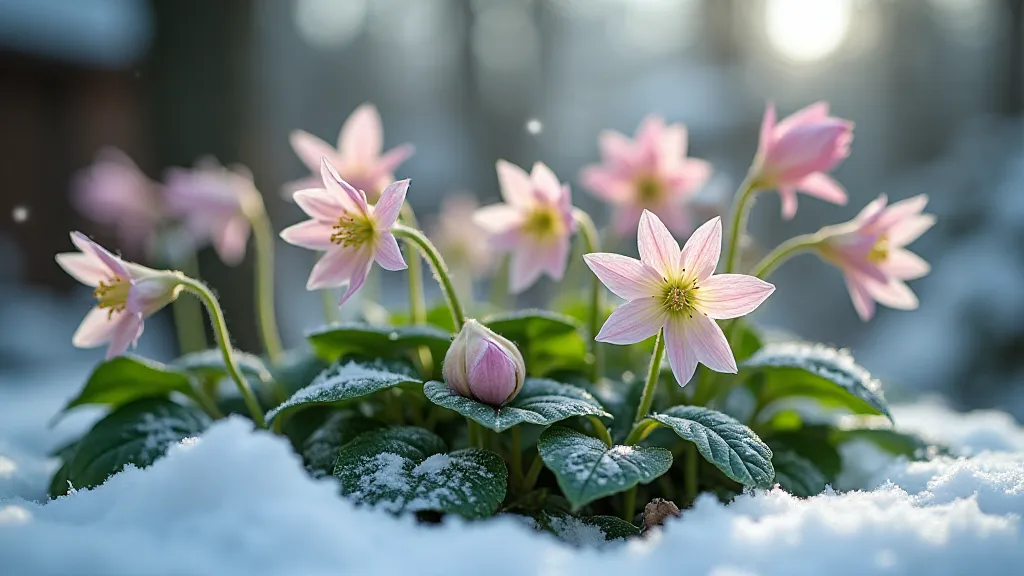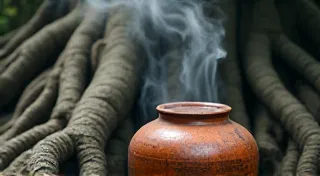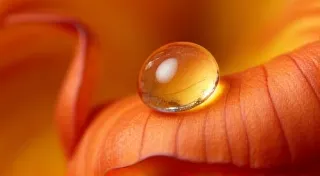Where Silence Blossoms: The Mystique of Hellebore in the Herbalist's Practice
There's a peculiar magic that clings to the corners of forgotten gardens – a quiet resilience, a beauty born not of vibrancy but of steadfast endurance. For me, that magic is embodied by Hellebore, or Lenten Rose (Helleborus spp.). It’s a plant that whispers secrets to those who listen, a floral echo of ancient remedies and folklore, a stark contrast to the clamor of modern life. My own journey with Hellebore began years ago, sparked by a faded photograph of my grandmother's garden, a riot of color now rendered in sepia tones, with these dark green, almost brooding leaves holding aloft their curious, nodding blooms.
My grandmother, Elara, was a woman of few words, but her hands spoke volumes. She was a skilled home remedy provider, her knowledge passed down through generations. I recall, as a child, being given a simple infusion – the scent faintly earthy – when I had a cough. I never questioned its efficacy, only absorbed the comforting ritual. Later, learning it was an Hellebore infusion, however diluted, brought a new reverence for her quiet wisdom and the power she entrusted to the plant.
A History Etched in Bloom
Hellebore’s story stretches back millennia, woven into the narratives of cultures across Europe and Asia. Ancient Greeks and Romans recognized its medicinal properties, though their knowledge was intertwined with caution and myth. Pliny the Elder documented its use for various ailments, while Dioscorides, the “father of botany,” included it in his seminal work, De Materia Medica. The name “Hellebore” itself derives from the Greek word 'hellebore,' referring to a type of plant, and connects it to the realms of healing and also, with a cautionary undertone, to toxicity.

The plant’s association with Lent, hence the common name "Lenten Rose," stems from its blooming cycle, often appearing just as the days begin to lengthen after winter. This timing further cemented its connection to themes of rebirth and resilience – traits perfectly reflecting both the plant’s ability to thrive in challenging conditions and the hopeful spirit it evokes.
Traditional Uses and Modern Interpretation
Historically, Hellebore has been employed for a surprisingly broad range of conditions. It was considered a remedy for gout, skin ailments, and even mental afflictions, though the approaches were often drastic and administered under strict supervision. The active compounds in Hellebore are complex alkaloids, possessing potent pharmacological effects. Modern herbalism approaches Hellebore with considerably more circumspection. While some practitioners utilize highly diluted preparations for specific conditions, such as respiratory ailments or skin issues, it’s crucial to emphasize the absolute necessity of expert guidance. Self-treating with Hellebore is fraught with danger.
My understanding of Hellebore’s potential evolved through conversations with a local herbalist, Maeve. Maeve's approach to herbalism wasn’s about dispensing cures but fostering an understanding of the body’s own healing capabilities. She explained that Hellebore, even in highly diluted form, works on a deep energetic level, influencing the body’s ability to release stagnation and restore balance. It’s not a quick fix, but a slow, steady process of regeneration. Her words resonated with the quiet wisdom I remembered from my grandmother's remedies - a recognition that true healing is often found in the gentle persistence of nature.
Toxicity and Dosage: A Word of Utmost Caution
Let's be unequivocally clear: Hellebore is toxic. The alkaloids present are potent and can cause severe adverse effects if improperly handled. Symptoms of poisoning can include nausea, vomiting, abdominal pain, seizures, and even respiratory failure. There is no room for experimentation. It must be handled only by experienced herbalists with a thorough understanding of its pharmacology and appropriate dosages.
The old stories, the tales passed down through families, often lack the precision needed for safe modern application. What might have been a "tiny pinch" to one person could be an overdose to another. The variability in alkaloid concentration within different varieties of Hellebore further complicates matters. Therefore, I must reiterate – under no circumstances should anyone attempt to self-treat with Hellebore without the direct supervision of a qualified professional.
Aesthetic Appeal: Winter's Silent Bloom
Beyond its medicinal history, Hellebore offers a unique aesthetic beauty. Its blooms, in shades of deep purple, slate blue, emerald green, and even creamy white, emerge bravely in the depths of winter, a splash of understated elegance against the backdrop of dormant landscapes. The nodding form of the flowers, almost shy in their display, lends an air of mystery and quiet dignity. They are a testament to nature’s ability to persevere, to find beauty even in the face of adversity.

Cultivating Hellebore is surprisingly easy. They thrive in shady locations with well-drained soil. They are remarkably resilient, requiring little maintenance and offering year-round interest. Their presence in a garden is a constant reminder of the cyclical nature of life, death, and rebirth.
The Accordion’s Echo: Craftsmanship and Legacy
There's a parallel, in a way, to the restoration of antique accordions. Each bellows fold, each mother-of-pearl inlay, represents a painstaking process of craftsmanship, a legacy of skilled hands. Like Hellebore, antique accordions carry stories – tales of traveling musicians, of lively dances and heartfelt melodies. Restoring one is not merely about fixing a broken instrument; it’s about preserving a piece of history, reconnecting with the artistry and passion of the past. One must respect the instrument's story, meticulously researching techniques to maintain its originality. A clumsy intervention can irreparably damage its essence, just as a misjudged dose of Hellebore can have devastating consequences. Both require reverence, meticulous observation, and profound respect.
The beauty of Hellebore lies not only in its blossoms but also in the silence it embodies. A silence that speaks of resilience, of ancient wisdom, of the quiet power of nature. It’s a plant that invites contemplation, that encourages us to slow down and appreciate the subtle wonders that surround us. And perhaps, like the echoes of a beloved accordion, its magic will linger long after its blooms have faded.






